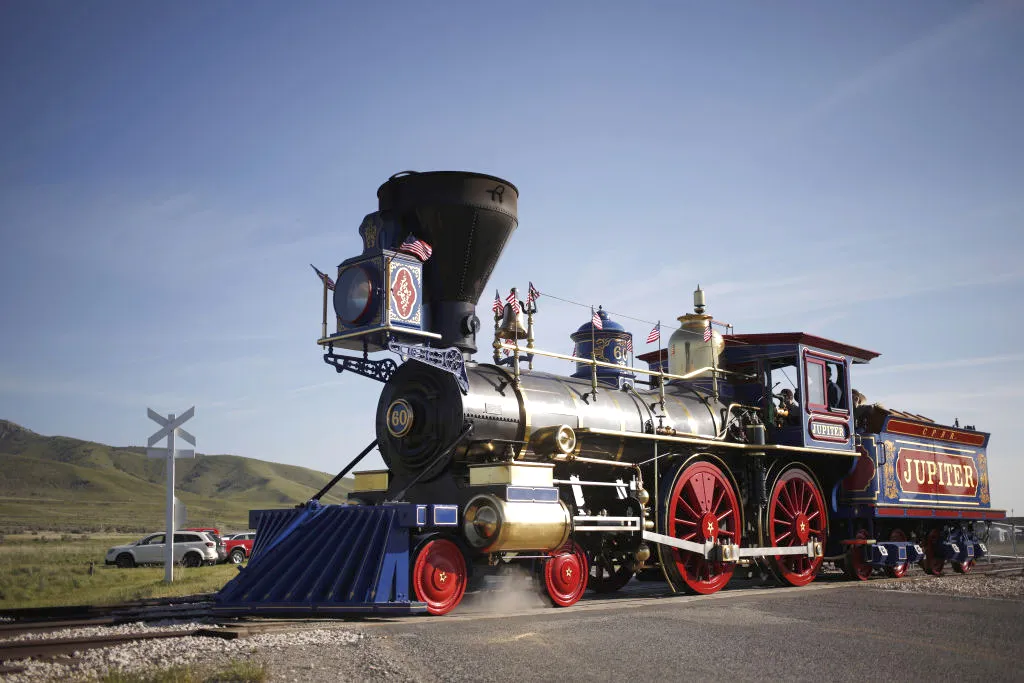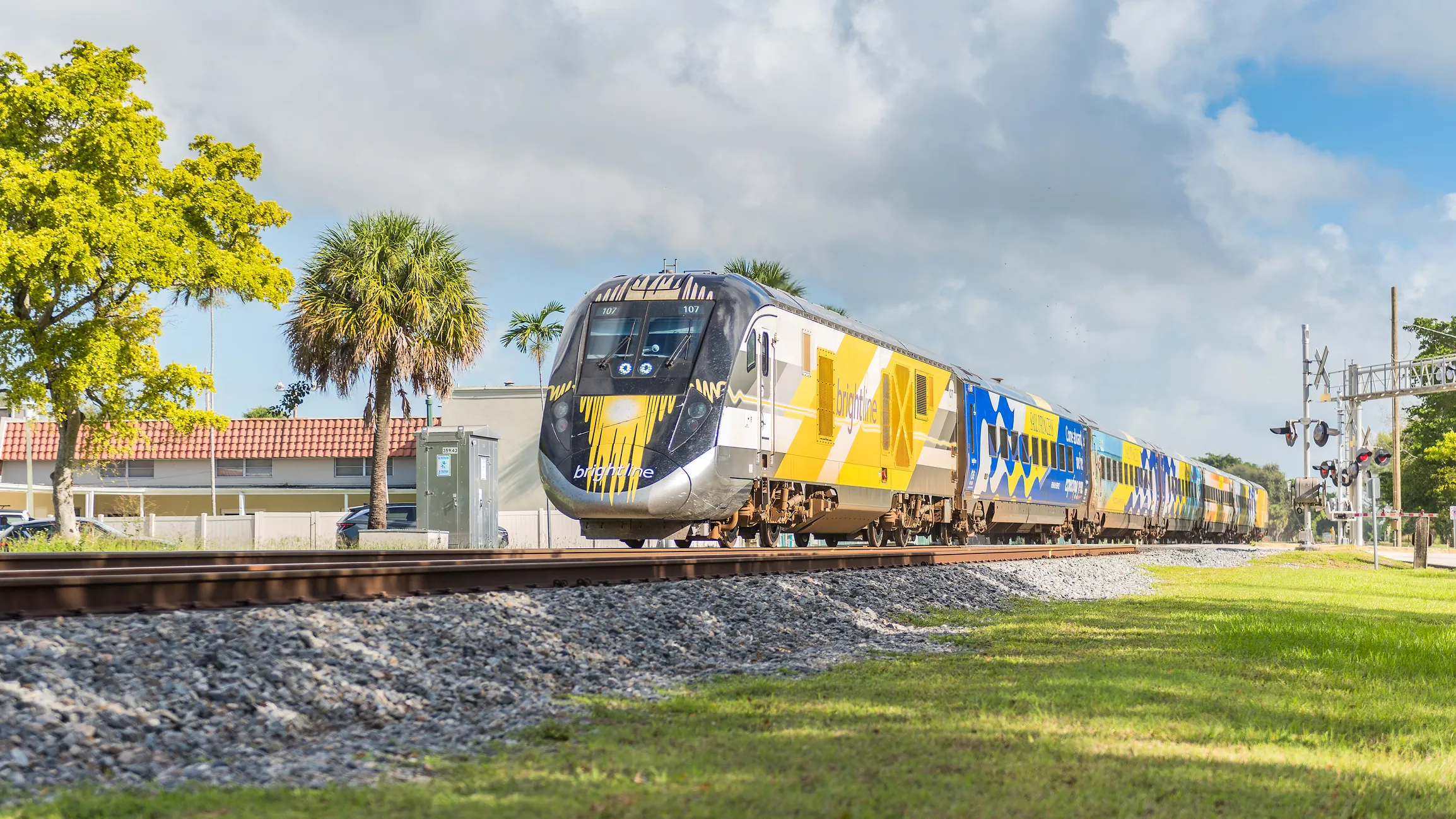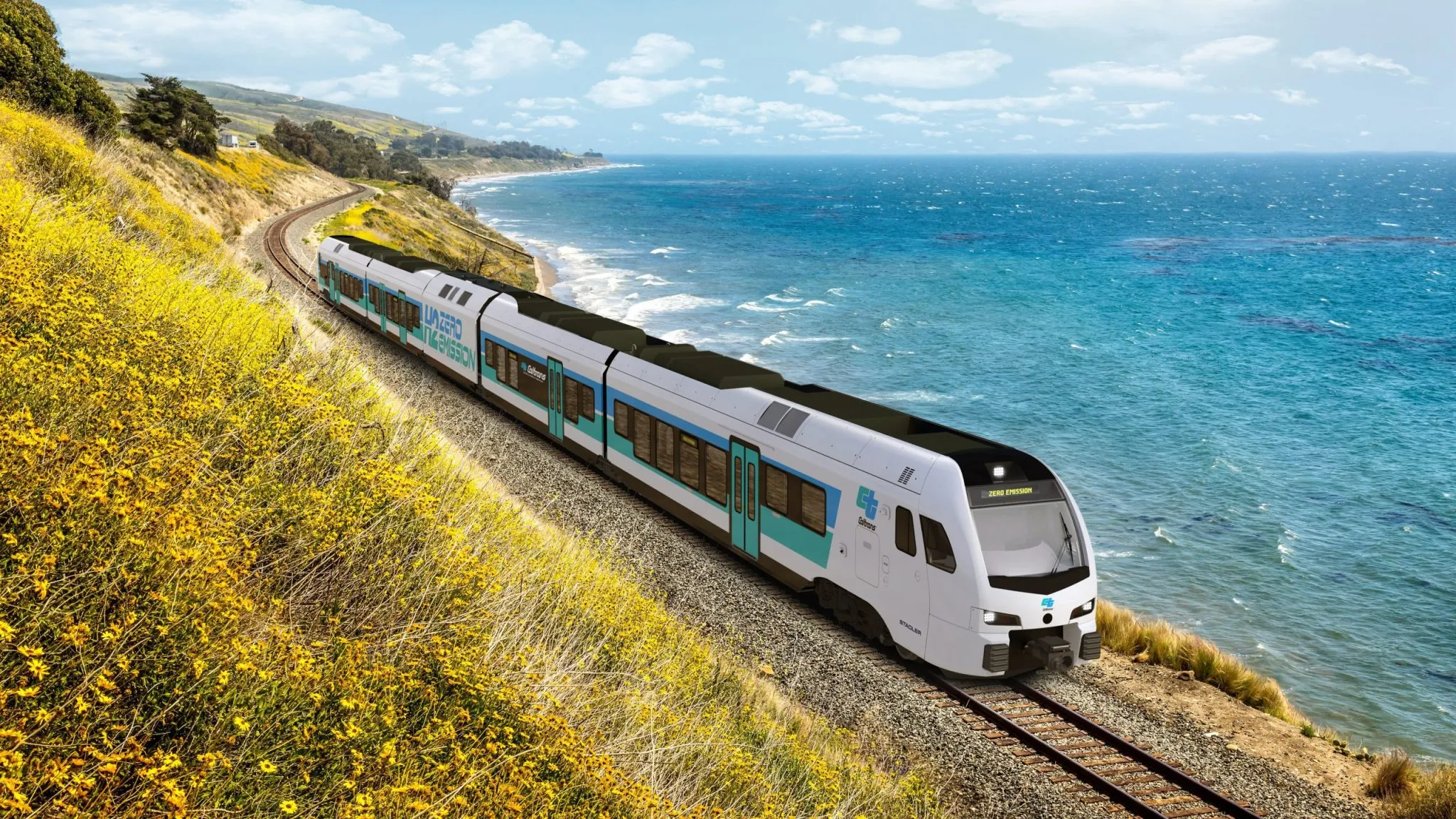Case Study A
Axe 4
Objet d'étude 2
From Hell on Wheels to Green Express
Ressource affichée de l'autre côté.
Faites défiler pour voir la suite.
Faites défiler pour voir la suite.
Pitch the next American railroad.
You are part of an innovation team hired by the U.S. department of Transportation to design a sustainable, fast and affordable new rail project for 2035: Green Express. Can you convince a panel of city planners, environmentalists and engineers to invest in your idea for the American train of the future?
You are part of an innovation team hired by the U.S. department of Transportation to design a sustainable, fast and affordable new rail project for 2035: Green Express. Can you convince a panel of city planners, environmentalists and engineers to invest in your idea for the American train of the future?
Ressource affichée de l'autre côté.
Faites défiler pour voir la suite.
Faites défiler pour voir la suite.
1Forging connections
Watch the related video .


Steam locomotive during a celebration of the 150th anniversary of the completion of the transcontinental railroad, 2019.


Steam locomotive during a celebration of the 150th anniversary of the completion of the transcontinental railroad, 2019.
Ressource affichée de l'autre côté.
Faites défiler pour voir la suite.
Faites défiler pour voir la suite.
Step 1
1
Watch the video above. Why was the railroad called “Hell on Wheels”?
2
List the ways the transcontinental railroad changed America.
3
Pick out impacts of the railroad that are still relevant today.
Action!
Write the opening of your Green Express pitch, and remind the panel how trains once built and connected America, and could do it again.
Ressource affichée de l'autre côté.
Faites défiler pour voir la suite.
Faites défiler pour voir la suite.
2Mapping new routes


The Brightline train, Miami, Florida, 2024.
Vidéo associée
Ressource affichée de l'autre côté.
Faites défiler pour voir la suite.
Faites défiler pour voir la suite.
Step 2
1
Pick out the factors that caused the decline of passenger train travel in the U.S.
2
What is Brightline, and what does it show about the future of trains in America?
3
According to the video, what are some advantages of train travel? What kind of trips is it ideal for?
Action!
Create a map for your future Green Express line. Choose 2 to 4 cities you would connect, based on what you learned. Add arrows, distances, and a name for your train route.
Cliquez pour avoir accès à un espace de dessin
Ressource affichée de l'autre côté.
Faites défiler pour voir la suite.
Faites défiler pour voir la suite.
3Hydrogen trains on trial


Stadler hydrogen train.
Vidéo associée
Ressource affichée de l'autre côté.
Faites défiler pour voir la suite.
Faites défiler pour voir la suite.
Hydrogen trains on trial
The United States has launched its first zero-emission passenger train in what could prove to be a significant milestone in global efforts to decarbonize public transport.
The Zero Emission Multiple Unit (ZEMU) made its debut in San Bernardino, California. The train carries 108 passengers and is scheduled to go into full service in early 2025. The ZEMU offers a real world-test of the potential of hydrogen technology in every day public transport.
While the U.S. is just starting its hydrogen train journey, other countries have already made significant progress.
With sustainability now at the forefront of development, we'll likely see more focus on electricity and hydrogen as the power source for railroad engines.
One of the main advantages of electric railways is that infrastructure and safety measures to supply and manage huge power loads are already in place. The implementation of hydrogen as a rail fuel would require infrastructure development on a large scale to transport, store and deploy it safely. Hydrogen is a volatile and highly explosive chemical, so strict safety measures at every point in the supply chain would be required. Storing large quantity of hydrogen on a fast-moving train is potentially hazardous.
The choice between hydrogen and electric trains will likely depend on specific route requirements, existing infrastructure, local energy production methods, and long-term cost projections.
The Zero Emission Multiple Unit (ZEMU) made its debut in San Bernardino, California. The train carries 108 passengers and is scheduled to go into full service in early 2025. The ZEMU offers a real world-test of the potential of hydrogen technology in every day public transport.
While the U.S. is just starting its hydrogen train journey, other countries have already made significant progress.
With sustainability now at the forefront of development, we'll likely see more focus on electricity and hydrogen as the power source for railroad engines.
One of the main advantages of electric railways is that infrastructure and safety measures to supply and manage huge power loads are already in place. The implementation of hydrogen as a rail fuel would require infrastructure development on a large scale to transport, store and deploy it safely. Hydrogen is a volatile and highly explosive chemical, so strict safety measures at every point in the supply chain would be required. Storing large quantity of hydrogen on a fast-moving train is potentially hazardous.
The choice between hydrogen and electric trains will likely depend on specific route requirements, existing infrastructure, local energy production methods, and long-term cost projections.
Ressource affichée de l'autre côté.
Faites défiler pour voir la suite.
Faites défiler pour voir la suite.
Step 3
1
Why is hydrogen considered as a good alternative to diesel for trains?
2
Pick out challenges to using hydrogen trains.
3
Why might some places choose electric trains instead of hydrogen trains?
Action!
Decide which clean technology your Green Express will use. Create a simple poster listing the pros and cons. This will help you defend your choice during your final pitch!
Cliquez pour avoir accès à un espace de dessin
Ressource affichée de l'autre côté.
Faites défiler pour voir la suite.
Faites défiler pour voir la suite.
Amtrak has been the main U.S. passenger rail company since 1971. Its Northeast Corridor line is busy and reliable, but service elsewhere in the country is often slow and delayed. It is now working to modernize and grow.
Ressource affichée de l'autre côté.
Faites défiler pour voir la suite.
Faites défiler pour voir la suite.


Ressource affichée de l'autre côté.
Faites défiler pour voir la suite.
Faites défiler pour voir la suite.
Ready...
- Go over your notes and review the key lessons and innovations mentioned in the documents.
Steady...
- Finalize your Green Express design: choose the best technology, map out the route, and complete your list of advantages before you present the project to the panel.
Go!
- Present your Green Express to the panel of experts. Use all the materials you've created to defend your choices and explain how your railway will shape the future.
Cliquez pour accéder à un module d'enregistrement audio
Enregistreur audio
Une erreur sur la page ? Une idée à proposer ?
Nos manuels sont collaboratifs, n'hésitez pas à nous en faire part.
j'ai une idée !
Oups, une coquille


